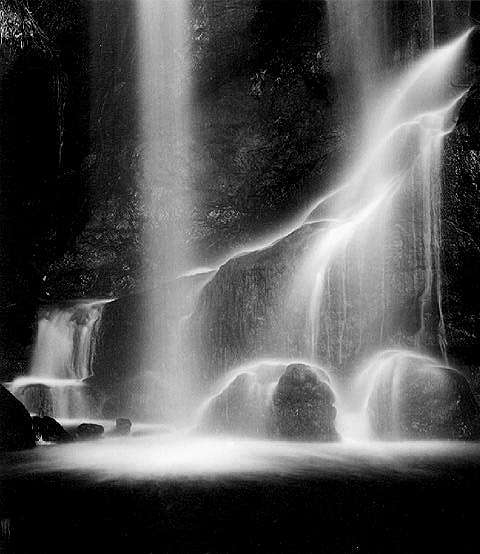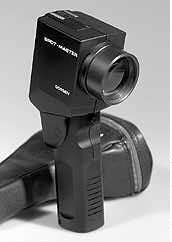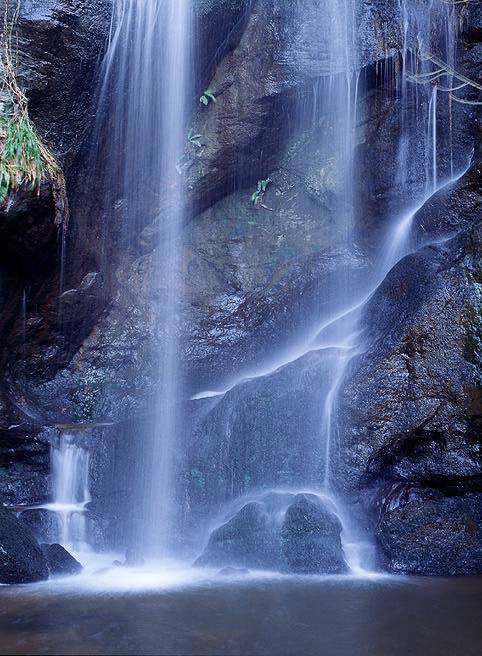


I have photographed it many times since I first saw it in 1979 (photographed in 1980, above) and have always enjoyed the time spent there. In recent years the level of the water has been very low, so much so that it almost ceased to be a waterfall.
However, we have had a lot of rainy weather in recent weeks and this coincided in my having a Gossen Spot-Master to test. Off to Roughting Linn I went armed with the latest in meter technology and the fervent hope that the water level had risen sufficiently to restore a magical waterfall to its former beauty.

The Gossen Spot-Master is a meter that apperas to have the facility to read light values in every situation. Flash, ambient light, EV mode, the Zone System and cine camera all have a place in this battery operated 1 degree digital meter. The 15 degree field of view has a clearly marked 1 degree centre circle which indicates the measuring angle. The field of view is surrounded by a display showing all readings.
All functions of the meter are controlled by four buttons and a sliding switch situated on the rear and in easy reach of your thumb. Functions can be selected by using two of the buttons on the rear whilst one of the remaining two buttons is used to take single readings and the other averages the single readings should more than one be made.
The slide switch is to change values as required. The meter can be used in either aperture or shutter priority mode where you select one and the meter determines the other. All selections are shown in the display surrounding the field of view.
I found the meter to be very sensitive to changes in light values and when using it in the EV mode had no problems in quickly determining the contrast range of the subject and deciding on my chosen exposure.
My experience when using the Zone System function was not so rewarding. First you are required to take a reading from the darkest shadow which the meter places on Zone V, then you must use a slide switch to place it on the Zone of your choice. You the can measure up to nine further spots, including the brightest highlight, and the meter displays them against the appropriate Zone on the display.
Having got this far you then press the average button and the meter displays the number of stops of contrast and the average of the two extreme values as a flashing number. This number is then placed in the middle of the exposure range by using the slide switch and at this point the digital display gives a guide for film processing, for example normal or -2 development.
In order to determine the exposure you are then required to select yet another function and choose a shutter speed/aperture combination at which point the Zone frame will flash to indicate that these settings originate from a Zone reading.
If this description sounds complicated it was meant to because that's just how it seemed to me when I was struggling with the various buttons and flashing lights that confronted me every time I looked through the meter's viewfinder.
I have used the Zone System for 18 years and have always found it relatively easy to quickly determine the contrast range of the subject and then choose and make the exposure using my 16 year old Soligor Spot Meter. The complications introduced by the Gossen Spot-Master are in my view unnecessary and time-wasting.

Contrary to the beliefs of some photographers, landscape photography often requires instant and accurate decision making in order to catch that fleeting magic moment. In the Zone System mode the Gossen Spot-Master did not provide me with that degree of speed. I did enjoy the accuracy and clear display when using the EV mode and feel that this is all that is required even when using the Zone System. I used the EV mode to meter the contrast of the 1995 version of Roughting Linn (in color, above, on my Mamiya 645) and also produced a very similar black and white negative to the original 1980 version.